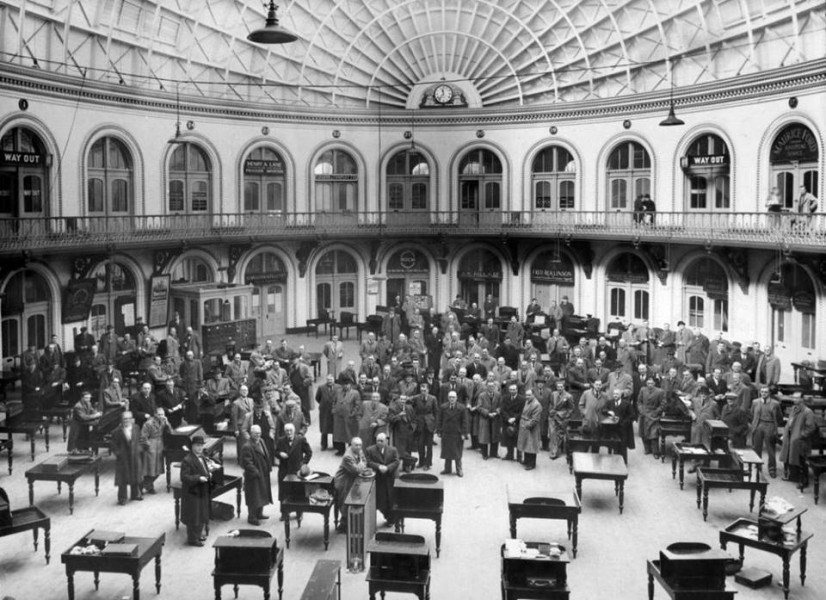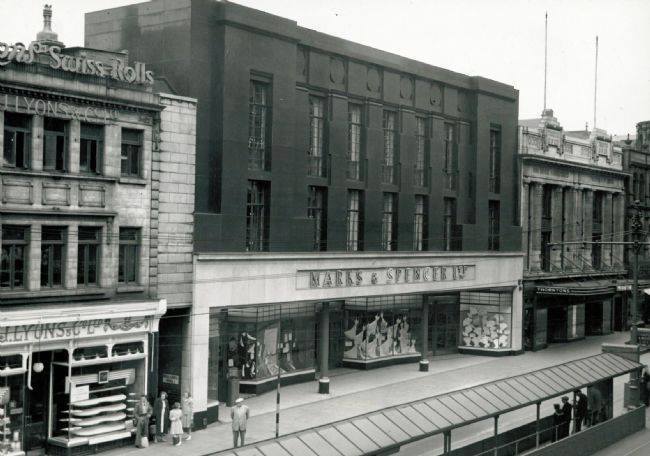A brief history of Leeds
As a born and raised Loiner, it shouldn’t be a surprise that I love Leeds. I find it a fascinating and vibrant place, which seemingly has a surprise hidden around every corner. I seem to spend a lot of my time telling anybody who will listen how great Leeds is, or at least those that are too polite to tell me to shut up!
However, my experience of talking to people who aren’t from Leeds often paints a picture of the city that isn’t true to the one I know. Most are aware of Leeds’ night-life, its shops, and its football team (often for
the wrong reasons sadly). They also are aware of the problems, problems often shared by all cities in my experience. But what people don’t often know about is the rich history and heritage that has brought the city to where it is today. In fact, some of that history is very easy to see, but the mix of the new and the old sometimes blinds people to the treasures that live on.
Leeds has existed since at least Anglo-Saxon times, due to its position as an important bridging point on the River Aire. The Venerable Bede, no less, referred to the small village of Loidis in the Welsh speaking Kingdom of Strathclyde.
But it was really the boom of industry that brought Leeds out of its shell. Cloth in particular was the trigger for the expansion of Leeds throughout the 17th centrusary. The author of Robinson Crusoe, visited Leeds in 1724 and described the Cloth Hall of the time as ‘a prodigy of its kind unequalled in the world’. Fine praise indeed!
The Industrial Revolution and the advent of machinery able to mass produce goods was to prove very important in the history of Leeds. Between 1790 and 1800, Benjamin Gott constructed what was, at the time, the largest mill in the world. He, amongst other contemporaries, triggered the golden age in Leeds history. Gott’s mill is now home to the Impressive Armley Mills Museum, a fascinating look into the Industrial Revolution and 19th century Leeds. Leeds cloth became world famous, thanks in no small part to the construction of the Leeds to Liverpool Canal in 1816 easing the movement of goods to the port at Liverpool, and export to the wider world. The canal also enabled the movement of goods in the opposite direction, aiding the growth of many other industries within Leeds. The wealth, and population, grew rapidly, and the Victorian era that followed left an indelible mark on the city. This mark can still be seen today.

Whilst much of the industry upon which the city’s wealth was built has long since been replaced with call centres, and global financial services institutions, part of the legacy of this early wealth remains. Leeds is still defined by the grandiose Victorian architecture that dominates the skyline. Cuthbert Brodrick is a
name synonymous with this, and not just for the Weatherspoon’s public house bearing his name! Brodrick designed the Mechanics Institute, now home to the City Museum, and the magnificent glass domed Corn Exchange. But his first and most famous design, and the symbol of Leeds pride, is the town hall building. Interestingly, his initial design didn’t include the majestic clock tower. In hindsight this would have been an omission bordering on the criminal!

The magnificent Kirkgate Market building, housing the largest covered market in Europe, and the well preserved ornate late 19th. The Arcades are famous for their boutiques and high range designer shops today, but a look upwards shows the true delights that they have to offer. Beautiful architecture and art work are the norm. The Thorntons Arcade mechanical clock depicting characters from Sir Walter Scott’s Ivanhoe initiating the quarter-hourly chimes, is not to be missed.

A little known store by the name of Marks and Spencers has its origins as a penny bazaar in Kirkgate Market. Whatever happened to them, I wonder? Whilst this rich heritage is still visible, Leeds has a number of less well known, but equally important legacies.

In 1812, the Middleton Railway carried the first commercially successful locomotive anywhere in the world, and laid the platform for the rapid growth of railways throughout the country. The railway still operates to an extent today, and is well worth a look for any enthusiasts.
In 1888 French Inventor Louis Le Prince filmed the first moving picture sequence anywhere in the world on Leeds Bridge along with another segment in Roundhay. The world of cinematography owes a little debt to the city of Leeds too it seems!
Charles Thackray was a revolutionary in the field of medical instruments, including pioneering work in the field of hip replacements. The Medical Museum named in his honour is certainly not for the squeamish.
And we must not forget the pioneering work of Joseph Aspdin. I’m sure you’re all aware that Joseph patented Portland Cement?! It is, however, pretty much impossible to write a brief history of Leeds and its people. I haven’t even touched upon the City Varieties, sport in the city, Houdini’s near death experience in a barrel of Tetley’s, Tetley’s itself, Whitelocks, Kirkstall Abbey, Temple Newsam, the coal mines of the south, the last soldier to die in World War 1, Herbert Asquith, Peter O’Toole and much, much more. And this doesn’t even begin to relay the character and history of the outlying suburbs, each of which has a unique story to tell.
Leeds? Yeah, it did ok!
Written by Steve Speight
For more pictures of Leeds please visit our facebook page: https://www.facebook.com/BredInLeeds

